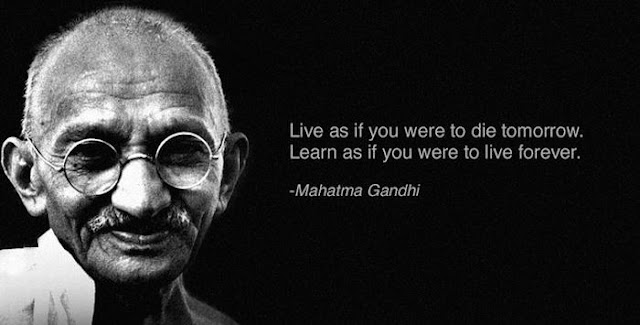sureCTET
Sure CTET designed for CTET aspirants,help them by providing study material,MCQ,and solved paper on child pedagogy,science maths etc asked in CTET
Thursday 28 November 2019
ctet quiz
CTET previous year paper quiz
Quiz
- ASSESSMENT IS PURPOSEFUL IF
- it induces stress among the students
- it done once at the end of the everysemester
- it serves as a feedback for teacher as well as students.
- comparative evaluation are made to differentiate between student achievement
- According to NCF 2005 the role of a teacher has to be
- faciilitative
- permissive
- dictatorial
- authertative
- To cater individual differences i the classroom , a teacher should
- impose strict upon his students
- engage in dialogue with the student and value their perspectives
- segregate and label children based on the marks
- have uniform and standard ways of teaching and assessment.
- As a teacher who firmly believes in social constructivist theory of Lev vygotsky which of the following methods would you prefer for assessing your students
- standardized tests
- collaborative projects
- multiple choice type question
- Fact based recall question
- inclusion of children with special needs:
- is detrimental to children without disabilities
- is an unrealistic goal
- require a change in atitude ,content and approach to teaching
- will increase a burden on school
Monday 11 March 2019
ctet|science|solvedpaper
science:
1.The smallest of living organisms with cell well are
(1) Algae
(2) Cyanobacteria
(3) Bacteria (Answer)
(4) Yeast
2. When CNG or LPG undergoes complete combustion, the products formed are
(1) CO2 , SO2 and 2 H O
(2) 2 CO only
(3) 2 CO and 2 H O(answer)
(4)2 CO ,COand 2 H O
3. One of the main Limitations of the Project method of teaching Science is that
(1) integration of concepts in various subjects can be achieved
(2) the students have to perform excessive mental and physical work (answer)
(3) it is a psychological method
(4) knowledge is not acquired in a sequential manner
4. Summative Assessment in Science should mainly focus on
(1) diagnosing the areas of learning difficulties of students (answer)
(2) assessing observation skills Assessment in Science should focus more on testing the ability of students to
(3) testing important theoretical concepts
(4) testing of mainly the practical skills
5.The SI unit of calorific value is
(1) Kilocalorie/kg
(2) KJ/kg (Answer)
(3) Calorie
(4) J/kg
6.The process of converting sugars into alcohols is known as
(1) Sterilization
(2) Homogenization
(3) Fermentation (Answer)
(4) Pasteurization
7. Which one of the following is most suited to the development of scientific skills in students?
(1) Performing laboratory work (answer)
(2) Conducting Science quiz
(3) Organizing a field visit
(4) Conducting Science Olympiads
8. A Science teacher is interested to focus more on acquisition of process skills by the
learners. Which of the following combination of methods of teaching should be preferred
by her to achieve the objectives?
(1) Lecture-cum-demonstration method
(2) Assignment-cum-questioning method
(3) Lecture-cum-discussion method
(4) Project-cum-laboratory method (answer)
9.Which of the following group of words can be correctly identified with Rhizobium?
(1) Leguminous plants, symbiotic, stem nodes
(2) Root nodules, pitcher plant, nitrogen deficient soil
(3) Nitrogen fixation, root nodules, leguminous plants (answer)
(4) Root of legumes, parasite, soluble nitrogen compounds
10.A laboratory thermometer shows five small divisions between the markings of 55°C and
56°C . This means that the thermometer can read correctly up to
(1) 55.25°C
(2) 55.1°C
(3) 55.5°C
(4) 55.2°C (answer)
11.Practical work in Science may be given due to emphasis in order to
(1) help the students verify the theoretical concepts (answer)
(2) improve the percentage of marks obtained by the students
(3) help the students develop the habit of maintaining written records
(4) keep proper check on punctuality and regularity of students
12 . Which one of the following is the major objective of teaching of Science at upper primary
stage?
(1) To develop proficiency in solving exercises given at the end of the chapter
(2) To promote rational thinking (answer)
(3) To remember names of scientists and scientific discoveries
(4) To learn important facts and formulae
13. The following observations were made by students A,B,C and D when they rubbed solid
baking soda on dry litmus paper
Student Effect on dry red litmus paper Effect on dry blue litmus paper
A Colour changed to blue No change
B No change Colour changed
C Colour changed to blue Colour changed to red
D No change No change
The correct observation was made by the student
(1) D
(2) A (answer)
(3) B
(4) C
14. Antibiotics are effective against
(1) Hepatitis A
(2) Dengue Fever
(3) Cholera (answer)
(4) Influenza
15.The minerals that are required in the right amount for proper functioning of muscles are
(1) iron and iodine
(2) Iron and calcium (answer)
(3) Sodium and potassium
(4) Iodine and fluorine
16. PET bottles and jars are commonly used for storing edible items. PET is a very familiar
form of
(1) Polyamide
(2) Polyester (answer)
(3) Acrylic
(4) Rayon
17.When electric current is passed through a metallic conductor, amount of heat produced in
the conductor depends on its
(1) material, length and thickness (answer)
(2) material and length only
(3) length and thickness only
(4) material and thickness only
18 The gases present in atmosphere that cause greenhouse effect are
(1) Carbon dioxide, oxygen, nitrogen
(2) Carbon dioxide, sulphur dioxide methane
(3) Nitrous oxide, oxygen, water vapour
(4) Methane, water vapour, carbon dioxide (answer)
19When carbon dioxide is passed through clear lime water solution, it turns milky. The milky
appearance of lime water is due to
(1) curdling of milk due to lime in lime water
(2) presence of impurities in lime water
(3) presence of insoluble calcium carbonate (answer)
(4) presence of soluble calcium carbonate
20.Constructivist approach in of Science refers to
(1) providing additional academic help to weak students
(2) applying different mathematical formulae in solving problems
(3) providing experiential learning to students (answer)
(4) providing more and more reading material to students
21.If the frequency of vibrations of a body is decreased and its amplitude is increased, then
(1) pitch decreases but loudness increases (answer)
(2) both pitch and loudness of sound produced will decrease
(3) both pitch and loudness of sound produced will increase
(4) pitch increases but loudness decreases
22.Which one of the following man-made fibres is also called artificial silk?
(1) Polyester
(2) Nylon
(3) Rayon (answer)
(4) Acrylic
23.The dietary fibres are
(1) made up of proteins
(2) also called roughage (answer)
(3) made up of cellulose and proteins
(4) made up of collagen fibres
24.Project method in teaching of Science is suited most to
(1) promote scientific method of working (answer)
(2) promote understanding of basic concepts in Science
(3) enhance numerical abilities of students
(4) strengthen reasoning skill of students
25.The gas which forms carboxy-haemoglobin in the blood, causing suffocation is
(1) Nitrogen
(2) Carbon dioxide
(3) Chlorofluorocarbon
(4) Carbon monoxide (answer)
26.Which of the following statements related to earthquakes is not correct?
(1) The seismograph records the seismogram (answer)
(2) The Richter Scale is not linear but logarithmic.
(3) The seismic waves originate from focus.
(4) The record of the seismic waves is called seismograph
27.Which one of the following is the key feature of Formative Assessment in Science?
(1) It is aimed at enhancing practical skills.
(2) It is conducted at the end of the year.
(3) It is diagnostic in nature (answer)
(4) It is aimed at developing scientific temper in the students.
Subscribe to:
Posts (Atom)
-
science: 1.The smallest of living organisms with cell well are (1) Algae (2) Cyanobacteria (3) Bacte...
-
CTET previous year paper quiz Index => CTET previous year paper quiz Quiz ...




